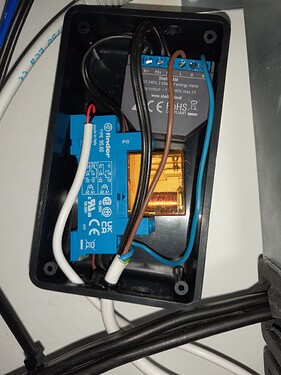Last weekend i played with cables and rewired Shelly EM - two channel energy meter so it logs power consumption for DHW under first channel and space heating under second.
3 way valve signal is used with relay switching the meter clamp for corresponding channel so I have the consumption in two separate graphs.
We still don’t have cold enough here to use floor heating fully.
I am courious how the regulation of room temperature will work. While using Glyn’s settings (constant flow temp 33-34C and Samsung controler as room thermostat) i am wondering if it will not overheat the space as there is around two hour delay between warm water entering the floor and feeling it in the air.
Maybe i will need some thermostat based on outside temp? e.g. when there is under 10C outside and under 21C inside at 15:00 let the pump run for 1hour, when under 5C/21C run for 2hours and so on… I dont know if something like that exists. Lets hope it will work as is with Samsung wired controller ![]()
